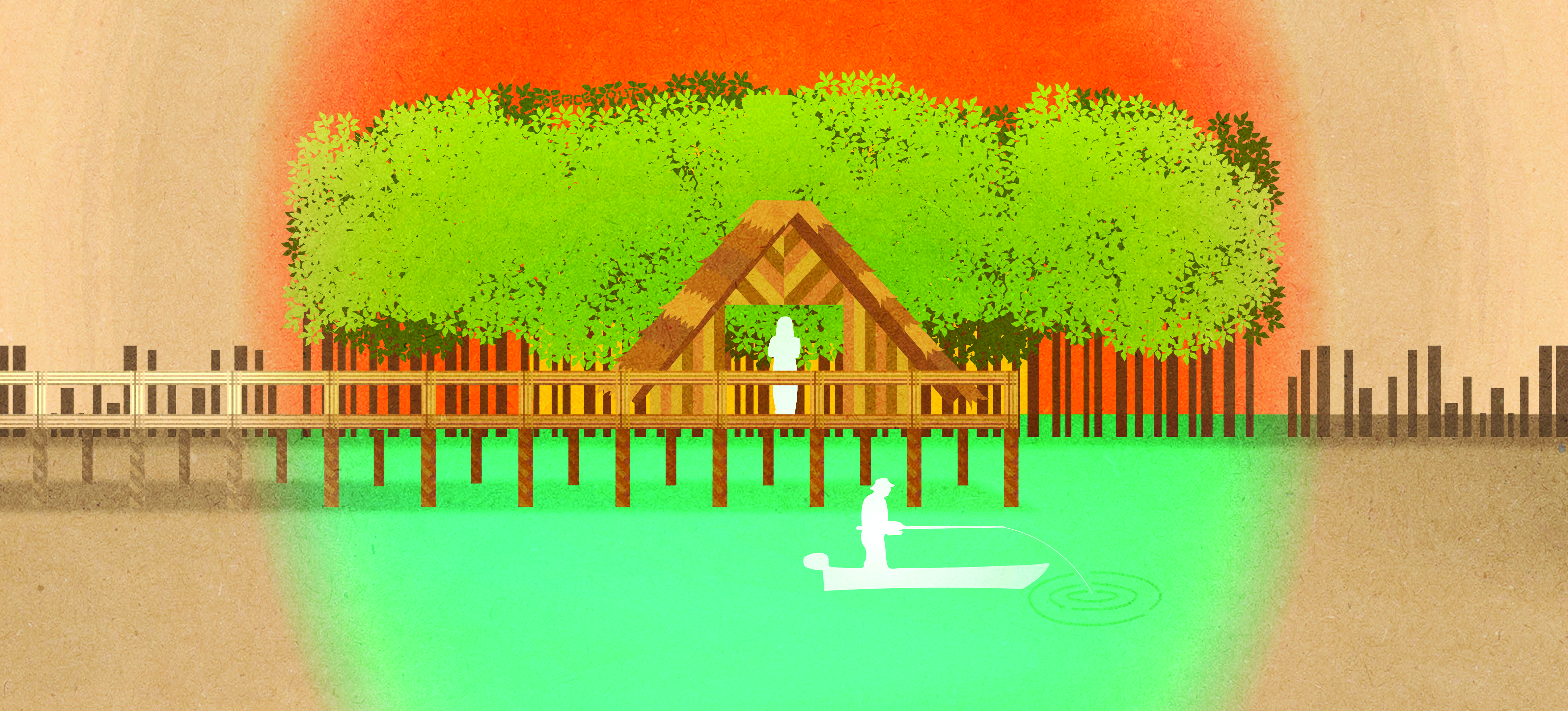Dek: There is more to environmentalism than what meets the eye. A notable environmental advocate who specializes in fisheries provides a deep dive on the realities of being one with nature.
“THE STORMS are getting stronger and stronger,” Carmela Ellaga—a Negros-native environmental advocate—shares. “We’ve experienced typhoons that devastated our reefs and forests.”
Listed as one of the Top 5 Young Women and Girls Fighting for Climate Justice, Ellaga devotes her life to coastal research management and marine conservation. A licensed fisheries technologist based in Danjugan Island, Negros Occidental, Ellaga works as a community officer for the Philippine Reef & Rainforest Conservation Foundation.
Ellaga’s work involves collaborating and coordinating with local government units and partner coastal communities to strengthen marine areas by establishing more mangrove eco parks and facilitating environmental awareness camps for the public.
Fresher pair of eyes
Accustomed to having bird calls for alarm clocks every morning, Ellaga grew up in a coastal community near Danjugan Island. Despite a life surrounded by the sea, Ellaga only gained a broadened understanding and appreciation for marine life after becoming a serious environmental advocate. “Growing up in a coastal community and seeing the coastal reefs but not really understanding or knowing what they are, it’s different—it’s a different experience knowing them beyond a snorkeling activity,” she claims.
Still, there is more to her job than what meets the eye. As a fisheries technologist, Ellaga had initially expected her line of work to solely deal with fishes and devising solutions to produce more to feed the community. “I realized my profession is more than focusing on the fish. It focuses on the people more, working with them in terms of managing, conserving, and protecting their resources,” she shares.
Collaborating with expert biologists, advocate mentors, and other young leaders has enabled Ellaga to thrive in her advocacy work. In doing so, helping her own community makes it all the more special.
“It’s a fulfilling job—it’s so good that you grow up from that community and then eventually work with that same community, and then you see progress despite the many challenges,” she maintains.
Rain or shine
One notable aspect of Ellaga’s work involves understanding local policies, specifically those centered around environmental concerns. Despite the promise in proposing solutions, political authorities struggle with the implementation process. “You have to understand the people and the communities affected by these local policies. […] The real challenge is not just passing the ordinance but reinforcing them and sustaining them,” she explains.
The nature of the work itself also holds hazardous risks. Ellaga has closely worked with Bantay Dagat volunteers, who are at the frontlines of protecting fisheries and coasts. This job proves to be life-threatening, as they face not only unpredictable weather at the hands of climate change but also contentions of territory, which may lead to dangerous altercations.
Despite the risks they face, these volunteers receive no benefits or incentives. In response, the Bantay Dagat Welfare and Incentives Act is being pushed to provide the volunteers security of tenure, insurance, and allowances, among many other benefits.
Moreover, environmental activists are at the forefront of calling out issues such as the MT Princess Empress oil spill, which has affected the health, livelihood, and food source of multiple coastal barangays in Oriental Mindoro. It has also put multiple endangered and threatened species in the Verde Island Passage at further risk. “It is heartbreaking to see… it sometimes [makes you angry]. It also urges responsible industries and agencies to take action and compensate [for] the damages done,” Ellaga says.
These harrowing circumstances are also why environmental activists like Ellaga continue to push for their advocacies. “It’s mostly because of the passion and love we have for the environment. That’s where we root our determination in working this dangerous job even if there are risks,” she expresses.
An environmental legacy
With her work in the island and her residence in a coastal community, Ellaga herself has seen the worsening effects of climate change firsthand. “We really experience [how] sea level rise. […] We see the tides rise very high [to heights] that we’ve never seen before,” she shares.
As such, coastal and marginalized communities are at most risk to the consequences of climate change. To combat such dangers necessitates multidisciplinary responses to environmental work. “Having diverse people coming from different backgrounds that share the same passion for the environment [is] crucial if we want to move our concerns for environmental issues forward,” Ellaga stresses.
Finally, Ellaga’s hope for her advocacy rests in the work she does with the youth. For her, it is fulfilling that young leaders are advocating for the environment one project at a time. With a legacy of diverse young leaders in the works, every environmentalist’s desire lies with the hope that movements toward the protection and conservation of nature are sustained.







